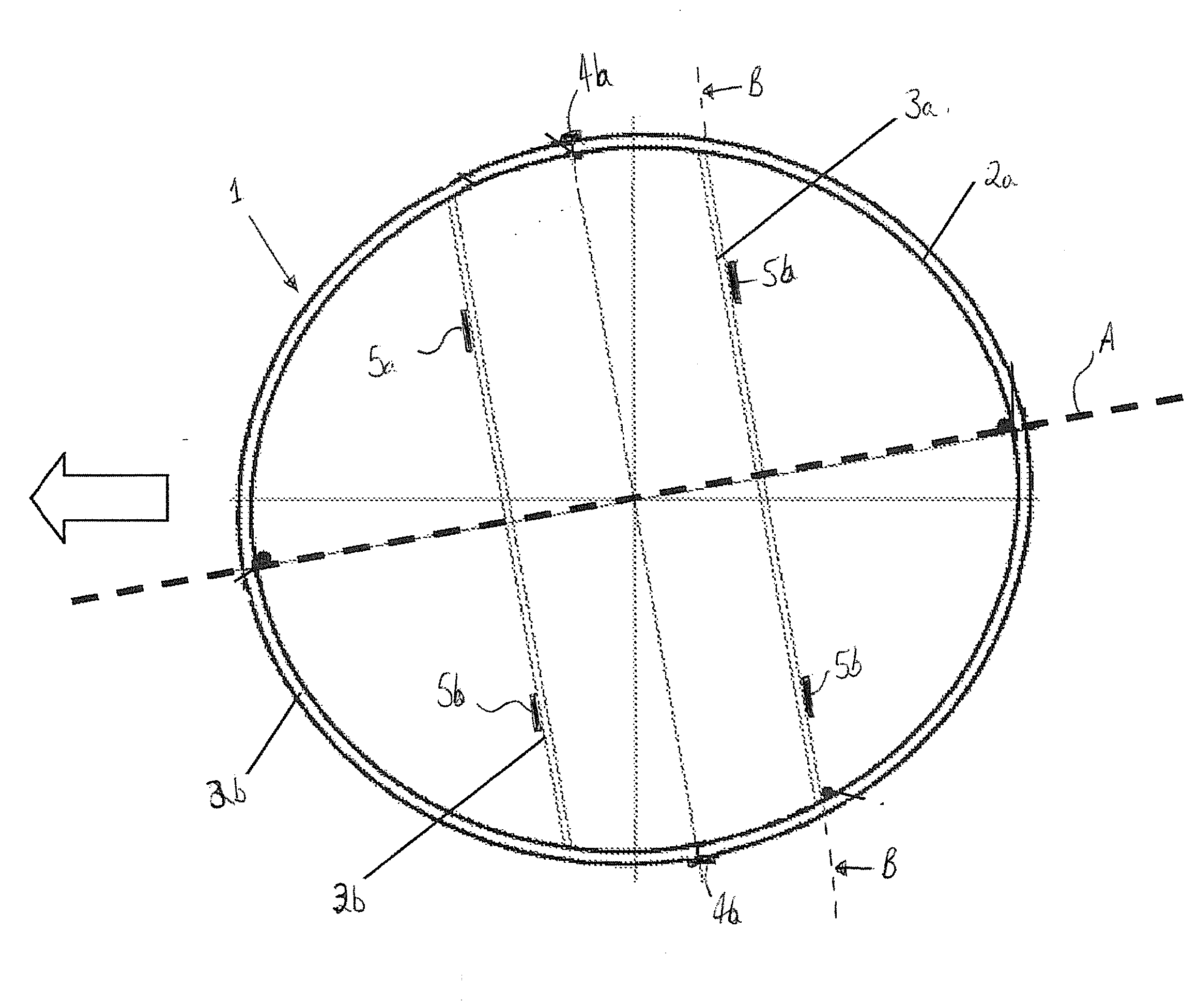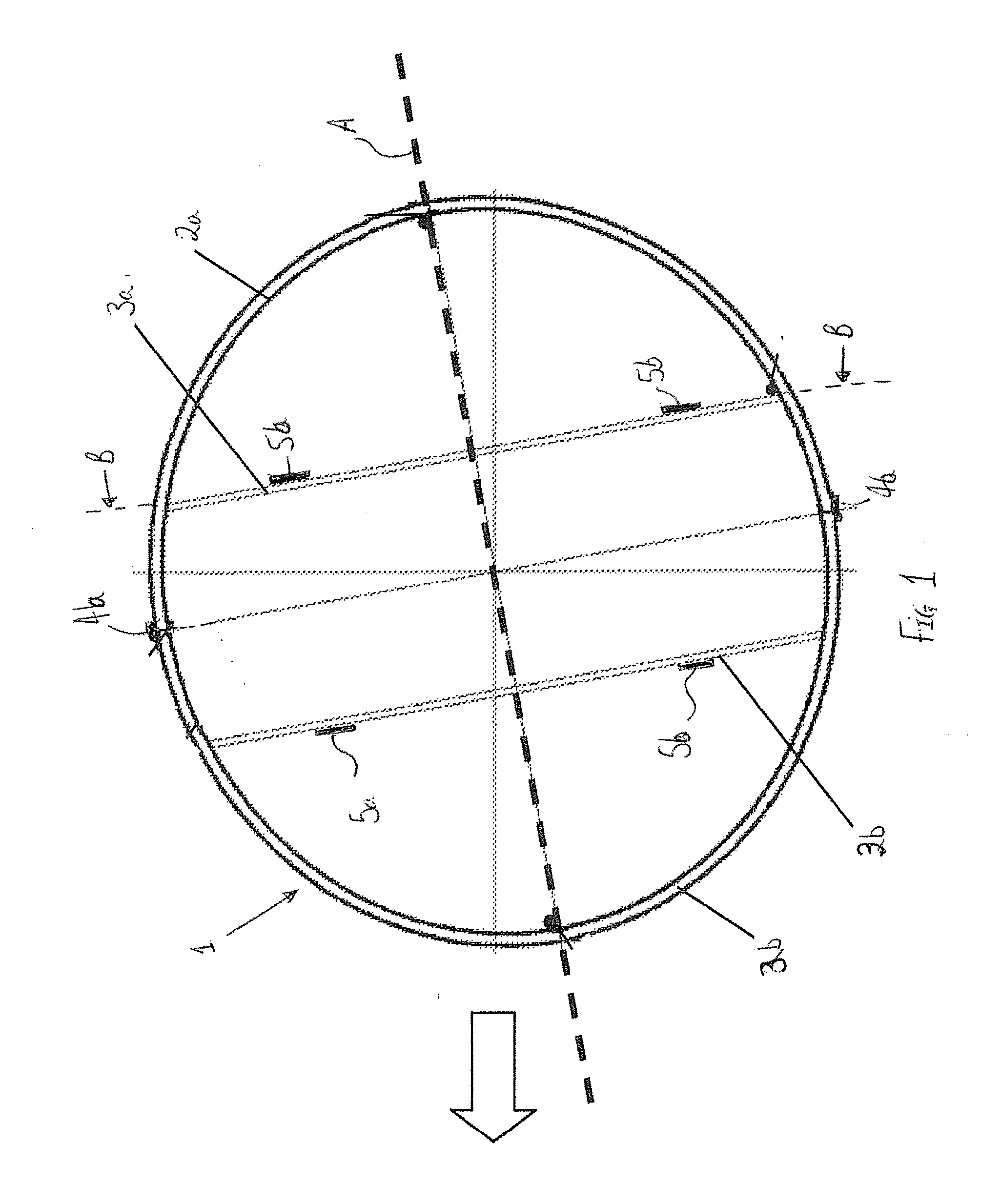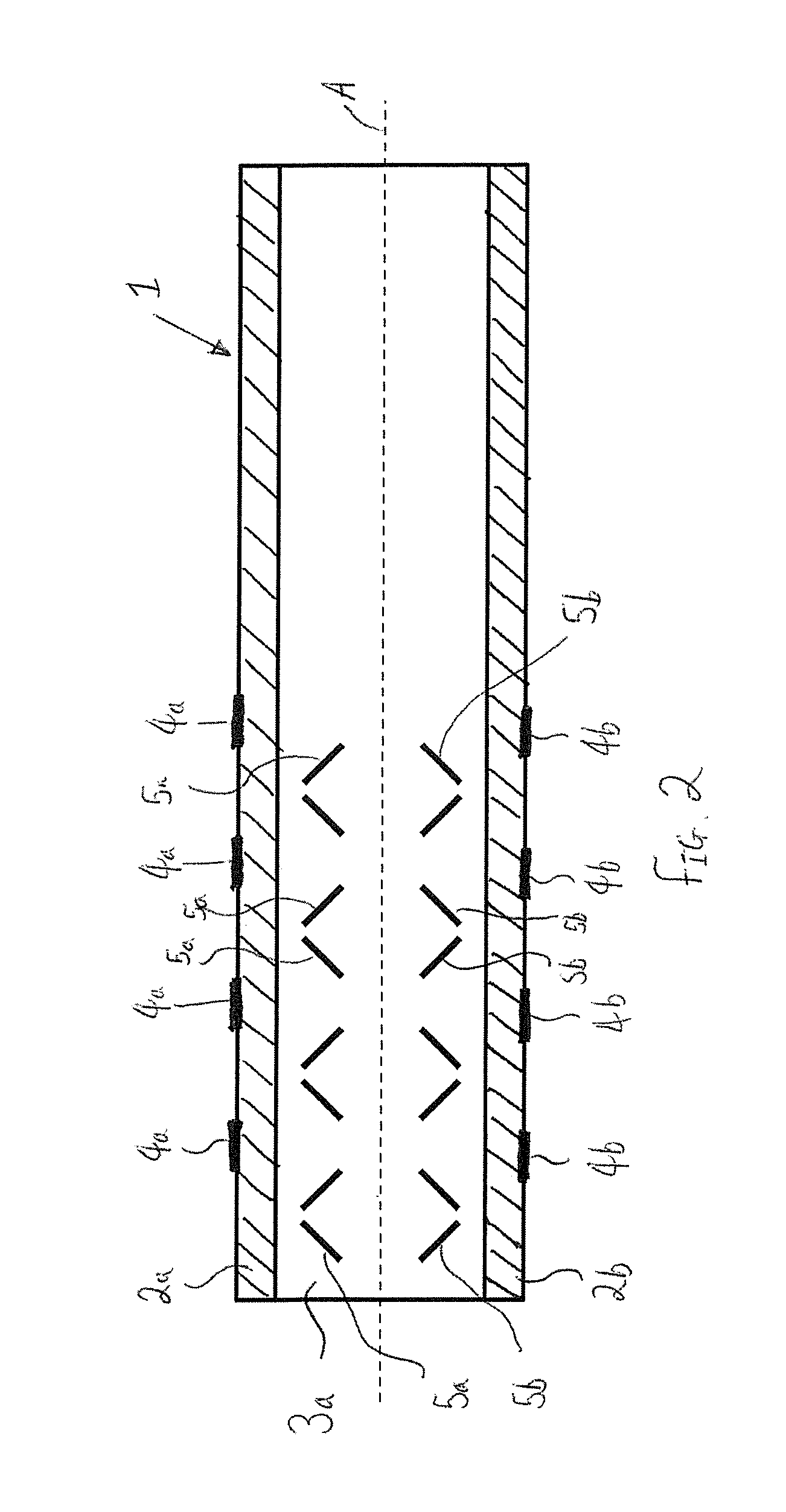Monitoring the structural integrity of a wind turbine blade
a technology of wind turbine blades and structural integrity, which is applied in the direction of structural/machine measurement, motors, engine fuctions, etc., can solve the problems of turbine blades being disconnected, blade halves being weakened, and shear webs debonding from the blades
- Summary
- Abstract
- Description
- Claims
- Application Information
AI Technical Summary
Benefits of technology
Problems solved by technology
Method used
Image
Examples
Embodiment Construction
[0020]FIG. 1 shows the construction of a typical wind turbine blade 1. The view in FIG. 1 is a cross section of the base of the turbine blade 1 viewed from the hub of the wind turbine towards the tip of the turbine blade 1. The direction of travel of the turbine blade is indicated by the large arrow. The view in FIG. 2 is a cross-section of part of the blade 1 in the direction of the arrows B-B in FIG. 1.
[0021]The turbine blade 1 is constructed as a surface shell formed in two halves 2a, 2b that are connected by shear webs 3a, 3b. The dividing plane between the two halves 2a, 2b of the surface shell is indicated by the dashed line A in FIGS. 1 and 2. Bending strain sensors 4a, 4b are mounted to the outer surface of each half shell 2a, 2b. The strains sensors 4a, 4b are shown in Figures as mounted to the outer surface of the shells for simplicity, but the sensors 4a, 4b may alternatively by mounted to the inner surface of the shells.
[0022]Pairs of shear strain sensors 5a, 5b are moun...
PUM
| Property | Measurement | Unit |
|---|---|---|
| acute angle | aaaaa | aaaaa |
| length | aaaaa | aaaaa |
| length | aaaaa | aaaaa |
Abstract
Description
Claims
Application Information
 Login to View More
Login to View More - R&D
- Intellectual Property
- Life Sciences
- Materials
- Tech Scout
- Unparalleled Data Quality
- Higher Quality Content
- 60% Fewer Hallucinations
Browse by: Latest US Patents, China's latest patents, Technical Efficacy Thesaurus, Application Domain, Technology Topic, Popular Technical Reports.
© 2025 PatSnap. All rights reserved.Legal|Privacy policy|Modern Slavery Act Transparency Statement|Sitemap|About US| Contact US: help@patsnap.com



